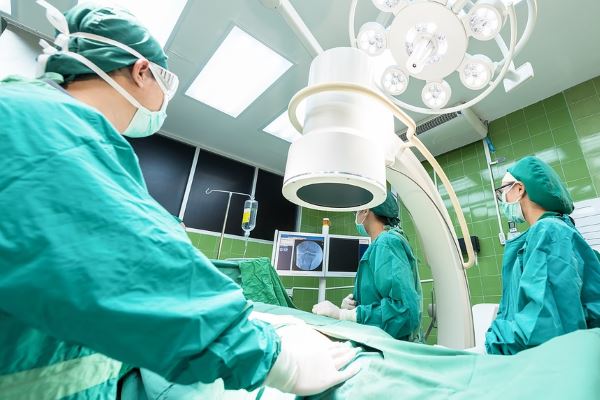In minimally invasive surgery, doctors apply a variety of techniques to perform operations that cause less damage to the body than open surgery. In general, minimally invasive surgery is associated with less pain, a shorter hospital stay, and fewer complications.
Continuous innovations in minimally invasive surgery provide benefits for patients suffering from a wide variety of diseases. If you need surgery and think you may be a candidate for this approach, consult your doctor.
At Uros Asssociats we specialize in:
Robotic Surgery in Urology for:
-Prostatectomy.
-Cystectomy.
-Radical nephrectomy.
-Nephroureterectomy.
-Pyelopastia.
-Urethral reimplantation.
–Retroperitoneal lymphadenectomy.
Urological Laparoscopy for:
-Prostatectomy.
-Cystectomy.
-Radical nephrectomy.
-Nephroureterectomy.
-Pyelopastia.
-Urethral reimplantation.
–Retroperitoneal lymphadenectomy.
Endourology for:
-Prostatic enucleation with Holmiun Laser.
-Prostatic photovaporization.
-Extracorporeal shock wave lithotripsy (ESWL).
-Ureterorenoscopy (URS).
-Laser treatment of ureteral and renal lithiasis.
-Intrarenal retrograde surgery (RIRS).
-Percutaneous nephrolithotomy (NLP).
Robotic surgery in Urology
Robotic surgery is surgery that is performed using the da Vinci robot, a special machine that offers many advantages. It is a very advanced minimally invasive technique that allows the surgeon to carry out surgical procedures in a very precise way. This type of surgery is usually performed under general anesthesia.
The advantages of robotic surgery over traditional open surgery is that, by being able to make smaller and precise incisions, the recovery time, as well as the pain associated with the surgical intervention, is less. With regard to laparoscopy, the robot offers a Increased instrumental manoeuvrability, freedom of movement, precision and ergonomics. In prostate surgery, specifically, the robot allows the possibility of preserving healthy tissue, preserving nerves that are not affected by the tumor, thus recovering urinary continence and erectile function faster than with other surgical techniques.
More and more surgical treatments are being performed using robotic surgery due to the advantages it entails for both the patient and the surgeon. In Urology, the robot is used in prostate cancer, kidney cancer, bladder cancer, genital prolapse, urinary tract reconstructive surgery, among others.
The Da Vinci robot. It has a center console that deploys mechanical arms controlled remotely by a second computer console manipulated by the specialist. The robot reproduces the surgeon’s movements and reduces the shaking of the human pulse, and also allows surgical instruments to rotate 360º, movements that are impossible for a human being. While the surgical specialist performs the intervention, he observes the entire procedure on a stereoscopic monitor with real 3D vision that allows him to appreciate the depth, being able to enlarge the image and therefore see better the section that operates, operating if necessary a few millimeters away from the area to be operated.
In the near future, it will be possible to operate robotic surgery through a single incision, an incision through which all the robotic arms will be introduced, reducing the trauma on the abdominal wall, also offering aesthetic advantages for the patient.
Advantages
- Quick recovery. Some procedures allow hospital discharge in as little as 48 hours.
- Less postoperative pain.
- Minimal incisions. Scars sometimes imperceptible.
- Surgical precision, ergonomics, wide maneuverability of instruments, 3D image amplitude, prevents human tremor
- It allows the preservation of healthy tissue and the precise excision of diseased tissue.
In Uros Associats we have certified specialists in robotic surgery, widely trained and with vast experience in prostate, renal, bladder and retroperitoneal surgery, among others, being in turn tutors of other specialists who begin their learning curve to perform highly complex techniques such as these robotic surgery techniques.
Laparoscopy in Urology
Laparoscopy is a surgical technique that allows the abdominal cavity to be inspected and intervened without making large incisions. This is an innovation in the last 30 years as part of the minimally invasive surgery, since it achieves excellent results with a much shorter and more pleasant postoperative period than that of open surgery. The tool used, the laparoscope, is a thin tube containing an optical system coupled to a light source at one end, with which the specialist can observe the structures and identify possible pathologies. It is also possible to introduce other instruments, usually tweezers, scalpels or scissors, through working ports called trocars. The incisions of laparoscopic surgery usually measure 0.5 to 1.5 cm, while these same operations in conventional surgery could involve incisions of between 10 and 20 cm. CO2 gas is blown into the abdomen to promote vision and develop a suitable workspace for work. The introduction of 3D towers that allow the surgeon to perform surgeries with three-dimensional vision, is one of the latest contributions, which have allowed to improve the results of this technique or route of surgical approach.
In Urology, laparoscopy is mainly used in pathologies of the prostate, bladder, ureter and kidney.
Advantages
The advantages of laparoscopy in urology are many:
- Smaller incisions; Smaller, sometimes imperceptible scars.
- Gastrointestinal transit is restored faster than with conventional open surgery, which translates into less hospitalization and recovery time.
- There is less chance of infectious complications.
- Less intraoperative bleeding
- Decreases postoperative pain.
- Shorter hospital stay
- Early resumption of work activity
Laparoscopic accesses
Laparoscopy can be performed anteriorly (or transperitoneally), or posteriorly (or retroperitoneally). The final decision about the choice of one access route or another will generally depend on the experience and comfort with the procedure to be performed by the surgeon who is going to perform the intervention.
Transperitoneal access (anterior)
. Most laparoscopic surgical procedures in Urology are performed transperitoneally, that is, in the space where the intestines are. The ease of access to a large number of organs and structures offered by this route has made this approach popular both in Urology and in other specialties. However, the retroperitoneal location of the kidneys, adrenal glands, bladder, prostate and retroperitoneal lymphatic chains that collect lymph from organs such as the testes and cervix pose the problem of dissection and displacement of other organs and structures for removal.
Retroperitoneal access (posterior) or Retroperitoneoscopy. The aRetroperitoneal embroidery, on the other hand, offers potential advantages especially in patients with suspected intraperitoneal adhesions due to previous surgeries, trauma, infection and radiotherapy, among others. It achieves faster access to the retroperitoneal space (space where urological organs are located, such as kidneys, ureters, adrenal glands, lymphatic chains of the great vessels), since it avoids dissection and intestinal mobilization. Avoid the possibility of vascular or intestinal injury by laparoscopic forceps. It decreases the risk of catastrophic injury to large vessels, as the trocars are placed under direct vision. It also decreases the risk of incisional hernias. Besides, in renal tumors located on the posterior aspect of the kidney, since the access is posterior, it is located more quickly and less aggressively, so it is the technique of choice.
In Uros Associats we have specialists widely trained in both laparoscopic access routes, pioneers in the introduction of these techniques in our country. In his baggage of thousands of procedures his vast experience and excellent results are deployed.





















